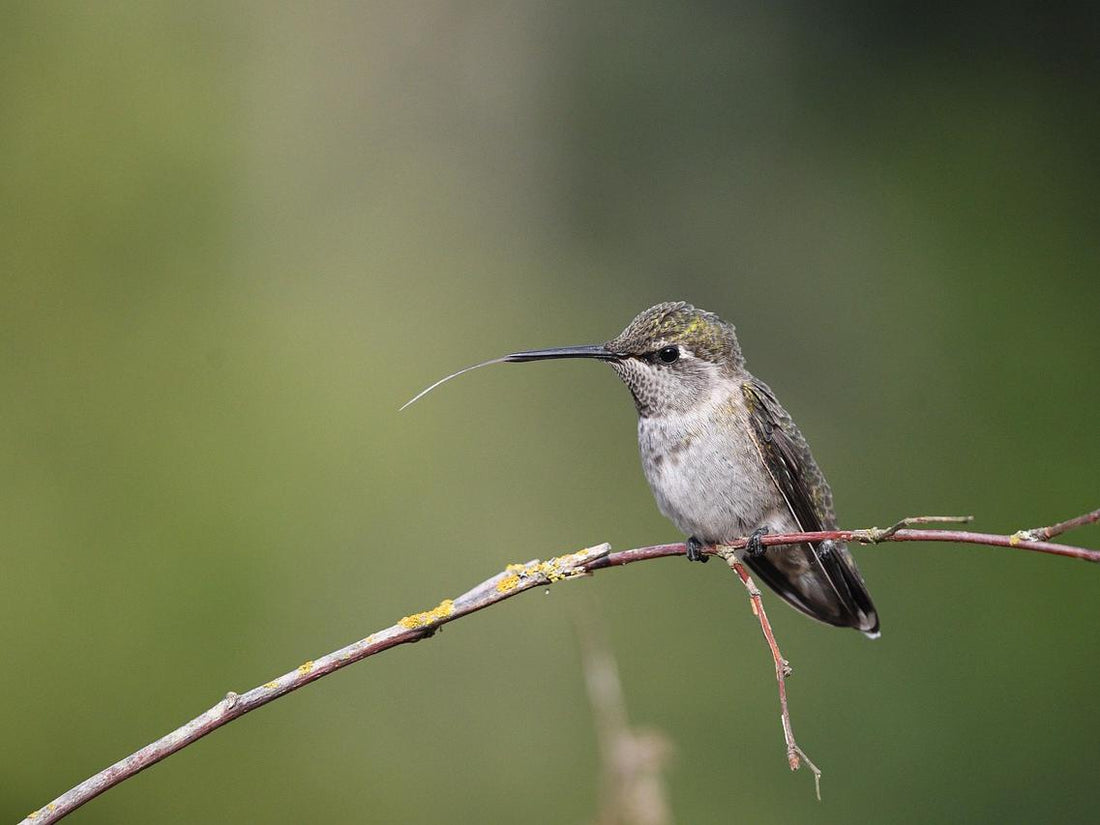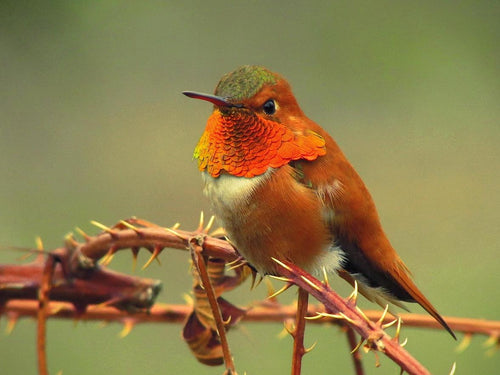The Fascinating Truth Behind the Hummingbird Tongue
TTNatureTeam
A hummingbird’s tongue might look like a tiny, skinny straw, and for a long time, people thought they used it to suck up nectar. But guess what? That old idea needs an update!
These tiny creatures—lighter than a coin—have one of the most incredible feeding tools in the bird world. And the truth about how their tongue actually works? It’s way more fascinating than you might think.
What Do Hummingbird Tongues Look Like?
Imagine this — if you could stretch a hummingbird’s tongue all the way out, it would extend well beyond its beak. In some species, it can even reach close to the length of their whole body! But that’s not even the coolest part.
Under a microscope or caught with a high-speed camera, you'd see that the tip of a hummingbird’s tongue actually splits into a tiny “Y” shape.
Along the edges of that split tip, things get even more interesting. It’s lined with microscopic, curled, hair-like structures. When the tongue is dry, these fringes stay curled up. But as soon as they touch nectar, it’s like magic—these tiny parts spring to life, working like a pair of perfectly designed tools made just for capturing liquid.
How Hummingbirds Really Drink?
For years, scientists believed hummingbirds used capillary action—like how a paper towel soaks up water—to draw nectar up through a groove in their tongue. This idea dominated textbooks for decades.
But everything changed in 2011. Thanks to high-speed cameras capturing over 500 frames per second, a research team led by biologist Alejandro Rico-Guevara turned that theory upside down.
Image adapted from: Takahashi et al. (2011), PNAS, https://doi.org/10.1073/pnas.1016944108. Adapted for educational, non-commercial use.
What they saw was stunning: the moment a hummingbird’s tongue touches nectar, the split tip snaps open like two tiny petals, flipping outward. Then, in less than 1/20 of a second, as the tongue pulls back into the beak, the edges—lined with microscopic, hair-like fringes—spring into action, trapping the nectar.
As the tongue fully retracts, the forked tips curl back in, squeezing the nectar inward, while the hairs fold neatly again. It’s like a self-loading spoon designed for liquid!
Why Is the Hummingbird’s Tongue So Important?
That strange little tongue isn’t just for show—it’s key to a hummingbird’s survival, shaped by millions of years of co-evolution with flowers.
Fast energy intake
Every second counts for a hummingbird. Its tongue is built to grab nectar fast, helping it get the fuel it needs to keep flying.
Fits all kinds of flowers
The flexible, forked tip lets hummingbirds reach into flowers of all shapes—especially those long, narrow ones that most birds can’t access.
A Closer Look Changes Everything
So next time you see a hummingbird darting around your garden or feeder, remember—it’s not sipping like a straw. It’s using a tongue that splits, springs open, and scoops up nectar faster than the eye can see. What seems simple is actually a masterpiece of nature, designed for one thing: survival on the wing.





